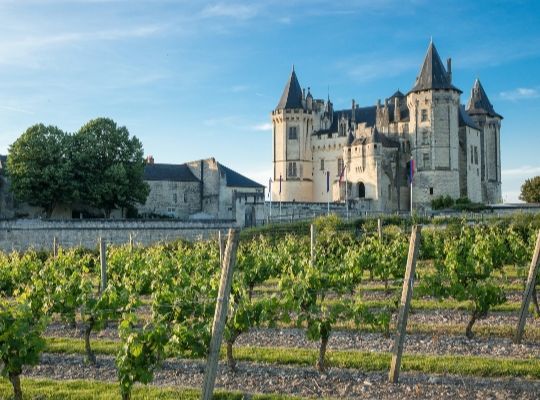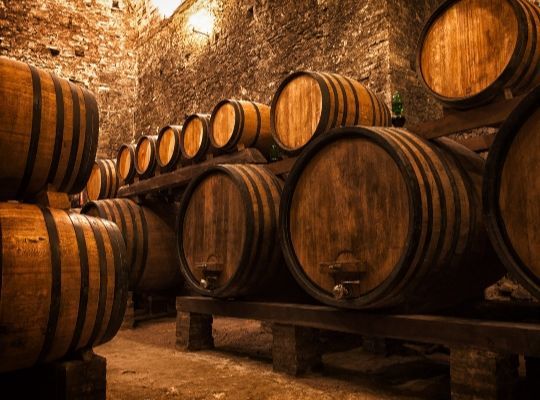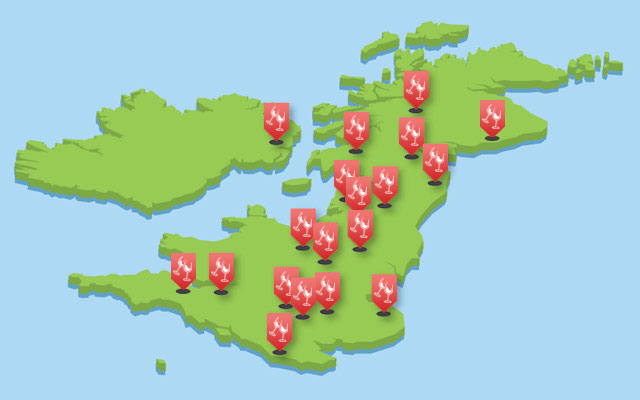
Event Description
France is home to some of the world’s most famous wines and on this special evening we will take you on a whistle stop tour of five major French wine producing regions, showcasing four fantastic white wines alongside three stunning red wines.
Yes, because it’s France, there is an additional wine tonight, making seven in total.
We will also unveil the true meaning of the French word “Terroir”.
1. We start in the Eastern part of France; Alsace, where the autumn weather allows grapes to reach a high degree of ripeness. This produces the famously aromatic and full-bodied white wines of Alsace, based on classic grape varieties such as Riesling, Gewurztraminer, Pinot Gris and Muscat. You will sample one of these famous wines in this session.
2. Next we move to the Loire Valley. The longest river in France produces a huge variety of wines from taught, neutral Muscadet at the coast through rosé wines in Anjou to white wines based on Chenin Blanc in famous villages such as Vouvray, before arriving in the “Central Vineyards” where the wines of Sancerre and Pouilly Fumé put Sauvignon Blanc onto the world wine map. We will taste great examples of Vouvray and one of these famous Sauvignon Blanc’s.
3. Heading into the heartland of France we arrive in Burgundy. The white wines here are based on Chardonnay and the red wines are based on Pinot Noir. We have a real treat for you as we sample both red and white Burgundy wines tonight.
White Burgundy, made from Chardonnay, set the template for this most famous grape variety all over the world, yet even in such a small region as Burgundy it varies hugely in style from lean, minerally Chablis to rich, buttery, oaky Pouilly-Fuissé. With such a variety of styles there is bound to be one that is made for your palate, let’s see if a classic Burgundy Chardonnay fits the bill.
Made exclusively from Pinot Noir, the red wines are some of the most sought-after wines in the world, with a complex and confusing system of labelling that we will decode for you whilst you enjoy a lovely Burgundian Pinot Noir.
Whilst we are in Burgundy, we will decode the mystery of the French word “Terroir”. This word, widely misunderstood to simply refer to soil, encompasses the “place” where the wine comes from, including the climate, the local geography and yes, the soil. It plays a major role in the French (and European) labelling of wines, but is widely misunderstood. Let us clear up any confusion for you tonight.
4.. For our next wine we journey to the West Coast of France to arguably the most famous wine region in the world – Bordeaux. The red wines here are known to the English as “Claret” and that is what we will sample. However, the term Claret hides a multitude of subtle differences based on the local area that the wine is made in and the particular mix of grape varieties that make up the blend. Merlot is almost always involved but whether it is blended with Cabernet Sauvignon, Cabernet Franc or not blended at all heavily influences the style of the wine. You will understand what is meant by “left bank” and “right bank” Bordeaux wines. Tonight we sample a Cabernet Sauvignon dominated wine from the “left bank”, or Medoc to give it a more accurate name.
5. Moving down to the South of France we arrive in the Rhône Valley. Here we are very much in red wine territory with the northern part dominated by Syrah (known as Shiraz in Australia) and the southern part a blend of Grenache, Syrah and Mourvedre. The south has a multitude of overlapping appellations from the generic Côtes du Rhône to iconic Châteauneuf du Pape. However, the north is often overlooked, and produces classic wines that are very different to those from the same grape planted in Australia. We will sample one of these Northern Rhône Syrah based wines from Crozes-Hermitage or St Joseph tonight.
Professional ISO tasting glasses, all course materials including tasting sheets & water are provided.
Santé







